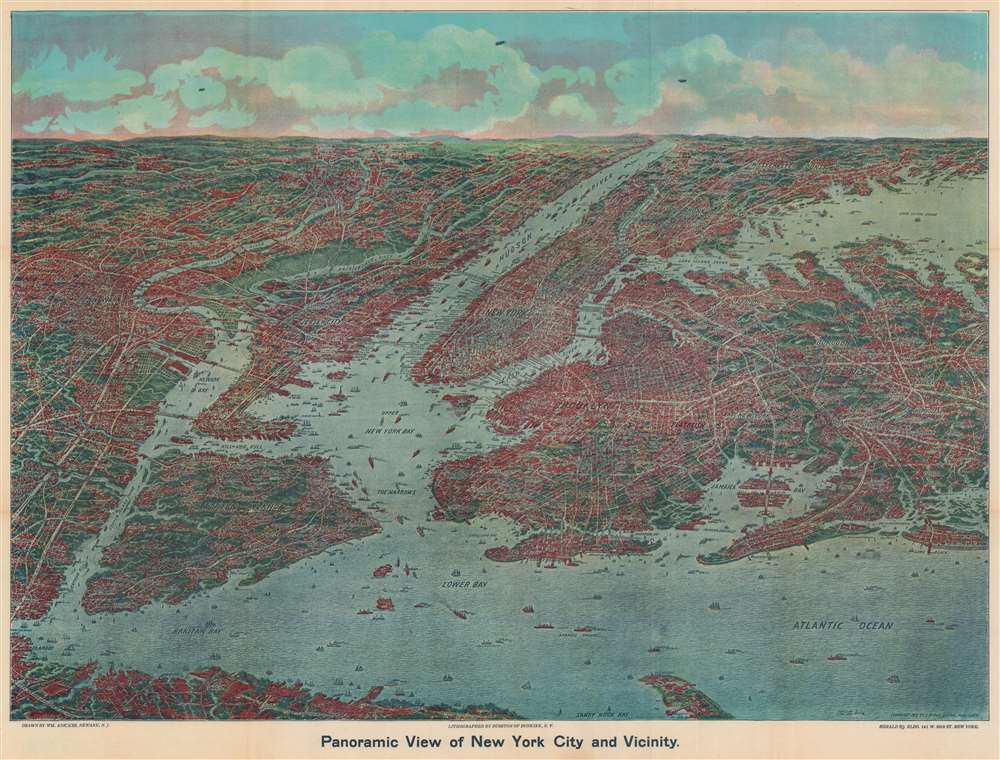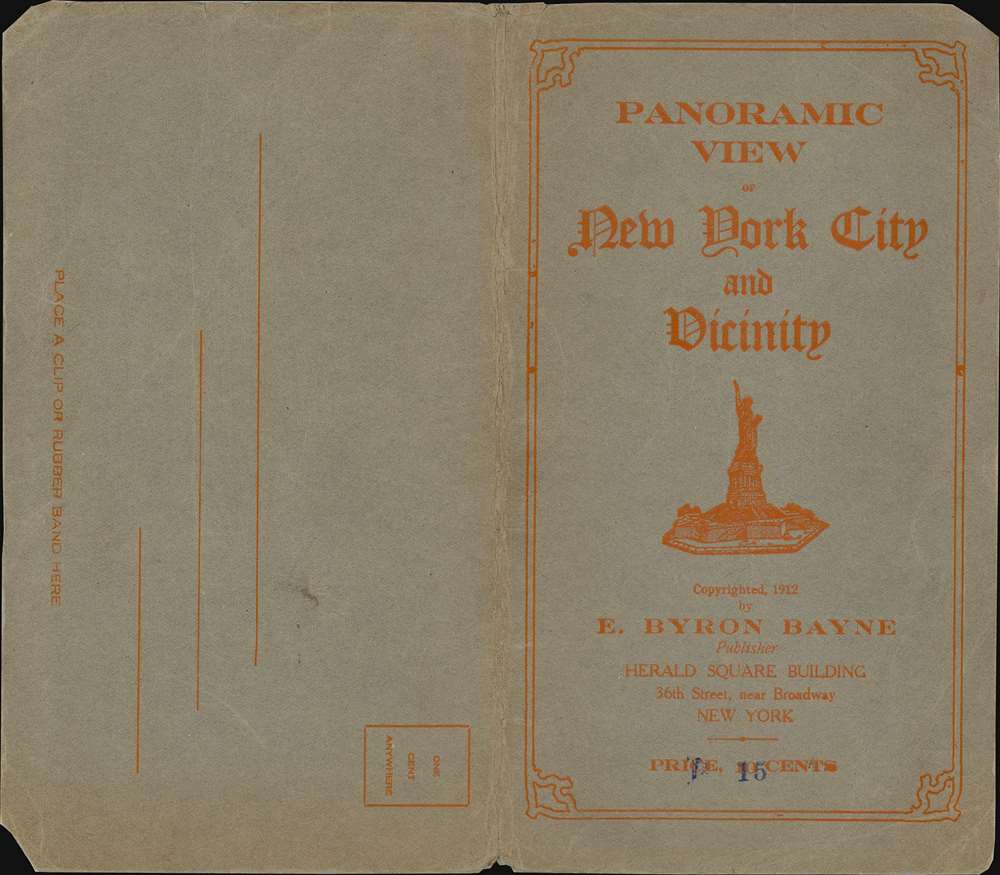This item has been sold, but you can get on the Waitlist to be notified if another example becomes available, or purchase a digital scan.
1912 Adickes Bird's-Eye View Map of New York City
PanoramicNYC-adickes-1912
Title
1912 (dated) 21.25 x 28 in (53.975 x 71.12 cm)
Description
American Bird's-Eye City Views
The tradition of the bird's-eye city view emerged in the United States in the middle part of the 19th century and coincided with the commercial development of lithographic printing. While before the rise of lithography, the ability to own and display artwork in the home was largely limited to the extremely wealthy, lithographic printing made it possible for everyone to own visually striking artwork. A robust trade developed in portraits of political leaders, allegorical and religious images, and city views.City views were being produced in the United States as early as the 1830s, but the genre exploded after the American Civil War (1861 - 1865). Bridging the gap between maps and pictures, most 19th century American Bird's-eye views presented cities to the public high vantage points. Some were imagined, but others were drawn from hot-air balloons or nearby hills. The presentation, combining high elevation, commercial interest, and new printing technology created a uniquely American art form, as described by historian Donald Karshan,
Some print connoisseurs believe that it was only with the advent of the full-blown city-view lithograph that American printmaking reached its first plateau of originality, making a historical contribution to the graphic arts. They cite the differences between the European city-view prints and the expansive American version that reflects a new land and a new attitude toward the land.The vogue for bird's-eye city views lasted from about 1845 to 1920, during which period some 2,400 cities were thus portrayed, some multiple times. Although views were produced in many urban centers, the nexus of view production in the United States was Milwaukee, Wisconsin. The major American viewmakers were Stoner, Wellge, Bailey, Fowler, Hill, Ruger, Koch, Burleigh, Norris, and Morse, among others.
Publication History and Census
This map was drawn by William Adickes, lithographed by the Dunston-Weiler Company, and published by E. Byron Bayne in 1912. Two editions were printed. The present full color edition bearing Adickes's and Dunston's imprints, and a black and white edition with only Bayne's imprint. Both editions are dated 1912. An empty OCLC record exists for this map, suggesting that a former OCLC member institution created the entry. Based on the OCLC entry we believe this record to refer to the black and white edition due to the absence of references to Adickes or Dunston. However, since both views were copyrighted in 1912 it is impossible to know for certain.CartographerS
William A. Adickes (March 1860 - 192x) was a German American artist. Adickes arrived in the United States in 1880 and settled in New Jersey. Two pieces by Adickes are known. One is a bird's-eye view of the Bronx Zoo and the other is a bird's-eye view of New York City and vicinity. More by this mapmaker...
E. Byron Bayne (fl. c. 1912 – c. 1913) was a New York publisher and entrepreneur. He may have been based in White Plains, although this is uncertain. Bayne is credited with publishing two important views, one from 1912 of New York City that was later repurposed to advertise Knickerbocker Beer, and a 1913 view of the New York Zoological Gardens (Bronx Zoo). Learn More...
George Hind Dunston (August 19, 1852 - March 12, 1912) was a American lithographer, binder, and printer. Born in Rochester, New York, Dunston began his career at Clay and Cosack in the late 1860s and then started Gies and Company with Charles Gies in 1874. He left to start his own firm, the Gorge H. Dunston Company, in 1882. In 1907 this company became the Dunston Lithographing Company. It was reorganized as the Dunston-Weiler Company in 1909 and moved to Dunkirk, New York, where it had a large new plant. Dunston served as president of the company until July 1911. He married his wife Nellie Sabin Taber on February 28, 1883 with whom he had one daughter. Learn More...




